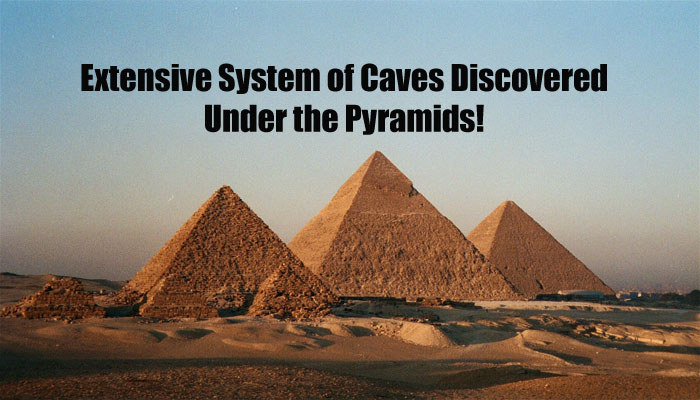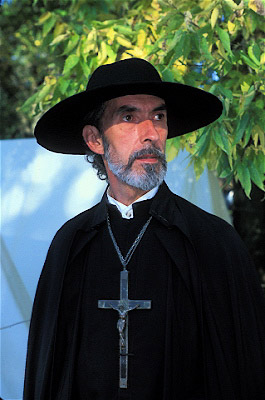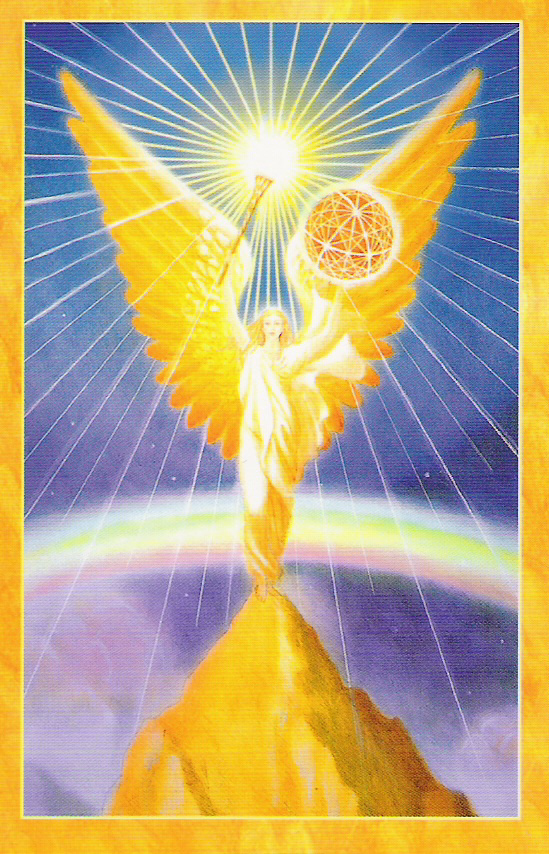The moving-finger types. Consider the topic of the Soul.
http://en.wikipedia.org/wiki/SoulThe soul, in many mythological, religious, philosophical, and psychological traditions, is the incorporeal and, in many conceptions, immortal essence of a person, living thing, or object.[1] According to some religions (including the Abrahamic religions in most of their forms), souls—or at least immortal souls capable of union with the divine[2]—belong only to human beings. For example, the Catholic theologian Thomas Aquinas attributed "soul" (anima) to all organisms but taught that only human souls are immortal.[3] Other religions (most notably Jainism) teach that all biological organisms have souls, and others further still that non-biological entities (such as rivers and mountains) possess souls. This latter belief is called animism.[4] Anima mundi and the Dharmic Ātman are concepts of a "world soul."
Soul can function as a synonym for spirit, mind, psyche or self.[5]
Linguistic aspects
Etymology
The Modern English word soul derived from Old English sáwol, sáwel, first attested to in the 8th century poem Beowulf v. 2820 and in the Vespasian Psalter 77.50, and is cognate with other Germanic and Baltic terms for the same idea, including Gothic saiwala, Old High German sêula, sêla, Old Saxon sêola, Old Low Franconian sêla, sîla, Old Norse sála as well as Lithuanian siela. Further etymology of the Germanic word is uncertain. A more recent suggestion[6] connects it with a root for "binding", Germanic *sailian (OE sēlian, OHG seilen), related to the notion of being "bound" in death, and the practice of ritually binding or restraining the corpse of the deceased in the grave to prevent his or her return as a ghost.
The word is probably an adaptation by early missionaries—particularly Ulfilas, apostle to the Goths during the 3rd century—of a native Germanic concept, which was a translation of Greek ψυχή psychē "life, spirit, consciousness".
The Greek word is derived from a verb "to cool, to blow" and hence refers to the vital breath, the animating principle in humans and other animals, as opposed to σῶμα (soma) meaning "body". It could refer to a ghost or spirit of the dead in Homer, and to a more philosophical notion of an immortal and immaterial essence left over at death since Pindar. Latin anima figured as a translation of ψυχή since Terence. Psychē occurs juxtaposed to σῶμα e.g. in Matthew 10:28:
— καὶ μὴ φοβεῖσθε ἀπὸ τῶν ἀποκτεννόντων τὸ σῶμα, τὴν δὲ ψυχὴν μὴ δυναμένων ἀποκτεῖναι·
φοβεῖσθε δὲ μᾶλλον τὸν δυνάμενον καὶ ψυχὴν καὶ σῶμα ἀπολέσαι ἐν γεέννῃ.
Vulgate: et nolite timere eos qui occidunt corpus animam autem non possunt occidere sed potius eum timete qui potest et animam et corpus perdere in gehennam. Authorized King James Version (KJV) "And fear not them which kill the body, but are not able to kill the soul: but rather fear Him which is able to destroy both soul and body in hell."
In the Septuagint (LXX), ψυχή translates Hebrew נפש nephesh, meaning "life, vital breath" and specifically refers to a mortal, physical life, but is in English variously translated as "soul, self, life, creature, person, appetite, mind, living being, desire, emotion, passion"; e.g. in Genesis 1:20:
— וַיֹּ֣אמֶר אֱלֹהִ֔ים יִשְׁרְצ֣וּ הַמַּ֔יִם שֶׁ֖רֶץ נֶ֣פֶשׁ חַיָּ֑ה LXX καὶ εἶπεν ὁ θεός ἐξαγαγέτω τὰ ὕδατα ἑρπετὰ ψυχῶν ζωσῶν. Vulgate Creavitque Deus cete grandia, et omnem animam viventem atque motabilem. KJV "And God created great whales, and every living creature that moveth."
Paul of Tarsus used ψυχή and πνεῦμα specifically to distinguish between the Jewish notions of נפש nephesh and רוח ruah (spirit) (also in LXX, e.g. Genesis 1:2 וְר֣וּחַאֱלֹהִ֔ים = πνεῦμα θεοῦ = spiritus Dei = "the Spirit of God").
Semantics
Although the terms soul and spirit are sometimes used interchangeably, soul may denote a more worldly and less transcendent aspect of a person.[7] According to psychologist James Hillman, soul has an affinity for negative thoughts and images, whereas spirit seeks to rise above the entanglements of life and death.[8] The words soul and psyche can also be treated synonymously, although psyche has more physical connotations, whereas soul is connected more closely to spirituality and religion.[9]
Philosophical views
The Ancient Greeks used the same word for 'alive' as for 'ensouled', indicating that the earliest surviving western philosophical view believed that the soul was that which gave the body life. The soul was considered the incorporeal or spiritual 'breath' which animates (from the Latin, anima, cf. animal) the living organism.
Francis M. Cornford quotes Pindar in saying that the soul sleeps while the limbs are active, but when one is sleeping, the soul is active and reveals in many a dream "an award of joy or sorrow drawing near."[10]
Erwin Rohde writes that the early pre-Pythagorean belief was that the soul had no life when it departed from the body, and retired into Hades with no hope of returning to a body.[11]
It has been argued that a strict line of causality fails to explain certain phenomena within human experience (such as free will) that have at times been attributed to the soul. (See also: Determinism and free will)
Some metaphysical thinkers believe that the concept of soul can be a solution for the explanatory gap and the problem of other minds, which suggests that we cannot know if other people really have consciousness.
Socrates and Plato
Plato, (424/423 BC – 348/347 BC) drawing on the words of his teacher Socrates, (469 BC – 399 BC) considered the soul the essence of a person, being that which decides how we behave. He considered this essence to be an incorporeal, eternal occupant of our being. As bodies die, the soul is continually reborn in subsequent bodies. The Platonic soul comprises three parts:
1.the logos, or logistikon (mind, nous, or reason)
2.the thymos, or thumetikon (emotion, or spiritedness, or masculine)
3.the eros, or epithumetikon (appetitive, or desire, or feminine)
Each of these has a function in a balanced, level and peaceful soul.
Aristotle
Aristotle (384 BC – 322 BC) defined the soul or psyche (ψυχή) as the first actuality of a naturally organized body,[12] but argued against its having a separate existence from the physical body. In Aristotle's view, the primary activity of a living thing constitutes its soul; for example, the soul of an eye, if it were an independent organism, would be seeing (its purpose or final cause).
The various faculties of the soul or psyche, such as nutrition, sensation, movement, and so forth, when exercised, constitute the "second" actuality, or fulfillment, of the capacity to be alive. A good example is someone who falls asleep, as opposed to someone who falls dead; the former actuality can wake up and go about their life, while the second actuality can no longer do so. Aristotle identified three hierarchical levels of living things: plants, animals, and people, for which groups he identified three corresponding levels of soul, or biological activity: the nutritive activity of growth, sustenance and reproduction which all life shares; the self-willed motive activity and sensory faculties, which only animals and people have in common; and finally reason, of which people alone are capable. Aristotle treats of the soul in his work, De Anima (On the Soul). Aristotle concludes, in the fifth chapter of the third book of this work, that the human active intellect is immortal.[clarification needed][13]
Avicenna and Ibn al-Nafis
Following Aristotle, the Muslim philosophers Avicenna (Ibn Sina) and Ibn al-Nafis, further elaborated on the Aristotelian understanding of the soul and developed their own theories on the soul. They both made a distinction between the soul and the spirit, and in particular, the Avicennian doctrine on the nature of the soul was influential among the Scholastics. Some of Avicenna's views on the soul included the idea that the immortality of the soul is a consequence of its nature, and not a purpose for it to fulfill. In his theory of "The Ten Intellects," he viewed the human soul as the tenth and final intellect.
While he was imprisoned, Avicenna wrote his famous "Floating Man" thought experiment to demonstrate human self-awareness and the substantiality of the soul. He told his readers to imagine themselves suspended in the air, isolated from all sensations, which includes no sensory contact with even their own bodies. He argues that in this scenario one would still have self-consciousness. He thus concludes that the idea of the self is not logically dependent on any physical thing, and that the soul should not be seen in relative terms, but as a primary given, a substance. This argument was later refined and simplified by René Descartes in epistemic terms when he stated: "I can abstract from the supposition of all external things, but not from the supposition of my own consciousness."[14]
Avicenna generally supported Aristotle's idea of the soul originating from the heart, whereas Ibn al-Nafis rejected this idea and instead argued that the soul "is related to the entirety and not to one or a few organs." He further criticized Aristotle's idea that every unique soul requires the existence of a unique source, in this case the heart. Ibn al-Nafis concluded that "the soul is related primarily neither to the spirit nor to any organ, but rather to the entire matter whose temperament is prepared to receive that soul," and he defined the soul as nothing other than "what a human indicates by saying 'I'."[15]
Thomas Aquinas
Following Aristotle and Avicenna, St. Thomas Aquinas (1225 – 1274) understood the soul to be the first actuality of the living body. Consequent to this, he distinguished three orders of life: plants, which feed and grow; animals, which add sensation to the operations of plants; and humans, which add intellect to the operations of animals.
Concerning the human soul, his epistemological theory required that, since the knower becomes what he knows[16] the soul was definitely not corporeal: for, if it were corporeal when it knew what some corporeal thing was, that thing would come to be within it. Therefore, the soul had an operation which did not rely on a bodily organ and therefore the soul could subsist without the body. Furthermore, since the rational soul of human beings was a subsistent form and not something made up of matter and form, it could not be destroyed in any natural process.[17] The full argument for the immortality of the soul and Thomas's elaboration of Aristotelian theory is found in Question 75 of the Summa Theologica.
Immanuel Kant
In his discussions of rational psychology Immanuel Kant (1724–1804) identified the soul as the "I" in the strictest sense and that the existence of inner experience can neither be proved nor disproved. "We cannot prove a priori the immateriality of the soul, but rather only so much: that all properties and actions of the soul cannot be cognized from materiality." It is from the "I", or soul, that Kant proposes transcendental rationalization, but cautions that such rationalization can only determine the limits of knowledge if it is to remain practical.[18]
James Hillman
Contemporary psychology is defined as the study of mental processes and behavior. However, the word "psychology" literally means "study of the soul,"[19] and psychologist James Hillman, the founder of archetypal psychology, has been credited with "restoring 'soul' to its psychological sense."[20] Although the words soul and spirit are often viewed as synonyms, Hillman argues that they can refer to antagonistic components of a person. Summarizing Hillman's views, author and psychotherapist Thomas Moore associates spirit with "afterlife, cosmic issues, idealistic values and hopes, and universal truths", while placing soul "in the thick of things: in the repressed, in the shadow, in the messes of life, in illness, and in the pain and confusion of love."[21] Hillman believes that religion—especially monotheism and monastic faiths—and humanistic psychology have tended to the spirit, often at the unfortunate expense of soul.[7] This happens, Moore says, because to transcend the "lowly conditions of the soul ... is to lose touch with the soul, and a split-off spirituality, with no influence from the soul, readily falls into extremes of literalism and destructive fanaticism."[22]
Hillman's archetypal psychology is in many ways an attempt to tend to the oft-neglected soul, which Hillman views as the "self-sustaining and imagining substrate" upon which consciousness rests. Hillman described the soul as that "which makes meaning possible, [deepens] events into experiences, is communicated in love, and has a religious concern," as well as "a special relation with death."[23] Departing from the Cartesian dualism "between outer tangible reality and inner states of mind," Hillman takes the Neoplatonic stance[24] that there is a "third, middle position" in which soul resides.[25] Archetypal psychology acknowledges this third position by attuning to, and often accepting, the archetypes, dreams, myths, and even psychopathologies through which, in Hillman's view, soul expresses itself.
Philosophy of mind
For a contemporary understanding of the soul/mind and the problem concerning its connection to the brain/body, consider the rejection of Descartes' mind/body dualism by Gilbert Ryle's ghost-in-the-machine argument,[26] the tenuous unassailability of Richard Swinburne's argument for the soul,[27] and the advances that have been made in neuroscience that are steadily undermining the validity of the concept of an independent soul/mind. The philosophies of mind and of personal identity also contribute to a contemporary understanding of the mind. The contemporary approach does not so much attack the existence of an independent soul as render the concept less relevant. The advances in neuroscience mainly serve to support the mind/brain identity hypothesis, showing the extent of the correlation between mental states and physical-brain states. The notion of soul has less explanatory power in a western world-view which prefers the empirical explanations involving observable and locatable elements of the brain. Even so, there remain considerable objections to simple-identity theory. Notably, philosophers such as Thomas Nagel and David Chalmers have argued that the correlation between physical-brain states and mental states is not strong enough to support identity theory. Nagel (1974) argues that no amount of physical data is sufficient to provide the "what it is like" of first-person experience, and Chalmers (1996) argues for an "explanatory gap" between functions of the brain and phenomenal experience. On the whole, brain/mind identity theory does poorly in accounting for mental phenomena of qualia and intentionality. While neuroscience has done much to illuminate the functioning of the brain, much of subjective experience remains mysterious.
Religions of the Ancient Near East
The souls of Pe and Nekhen towing the royal bargue on a relief of Ramesses II's temple in Abydos.
In the ancient Egyptian religion, an individual was believed to be made up of various elements, some physical and some spiritual. See the article Egyptian soul for more details.[citation needed]
Similar ideas are found in ancient Assyrian and Babylonian religion. Kuttamuwa, an 8th century BC royal official from Sam'al, ordered an inscribed stele erected upon his death. The inscription requested that his mourners commemorate his life and his afterlife with feasts "for my soul that is in this stele". It is one of the earliest references to a soul as a separate entity from the body. The 800-pound (360 kg) basalt stele is 3 ft (0.91 m) tall and 2 ft (0.61 m) wide. It was uncovered in the third season of excavations by the Neubauer Expedition of the Oriental Institute in Chicago, Illinois.[28]
Bahá'í
The Bahá'í Faith affirms that "the soul is a sign of God, a heavenly gem whose reality the most learned of men hath failed to grasp, and whose mystery no mind, however acute, can ever hope to unravel.[29] Bahá'u'lláh stated that the soul not only continues to live after the physical death of the human body, but is, in fact, immortal.[30] Heaven can be seen partly as the soul's state of nearness to God; and hell as a state of remoteness from God. Each state follows as a natural consequence of individual efforts, or the lack thereof, to develop spiritually.[31] Bahá'u'lláh taught that individuals have no existence prior to their life here on earth and the soul's evolution is always towards God and away from the material world.[31]
Brahma Kumaris
In Brahma Kumaris, souls, called atmas, are believed to be an infinitesimal point of spiritual light residing in the forehead of the bodies they occupy. Every soul has three separate faculties which are inherent in all human beings irrespective of place of birth. Just as electrical energy produces warmth, sound or light depending on the device through which it passes, similarly, the energy of consciousness functions through three different but closely connected faculties, referred to respectively by the terms mind, intellect, and personality.
The Mind With the power of the mind, one imagines, thinks and forms ideas. Thoughts are created in the mind. The thought process is the basis of all emotions, desires and sensations. It is through the minds that, in an instant, thoughts reach anywhere, a memory can be relived and the feeling of happiness or sadness is experienced. The metaphysical mind should not be confused with the heart, the physical organ that maintains blood circulation.
The Intellect Thoughts are processed and interpreted by the intellect. This is the faculty which understands. The capacity to understand is perhaps the single most crucial ability of the soul. Clear understanding of anything is possible when the intellect becomes broad, deep and farsighted through the regular study of spiritual knowledge and the disciplined practice of meditation. The intellect also reasons, memorizes, discriminates and makes decisions. The non–physical intellect should not be confused with the physical brain, which is the physical focus of the nervous system. The brain is the soul’s control panel; it provides the facilities for the soul’s expression.
The Personality[32] Any action once performed leaves an impression on the soul. Habits, temperaments and tendencies are all embedded in the soul (as images, feelings, sounds, trains of thought, etc.) as a result of every action performed. The most fundamental feature of every soul, its personality, is determined by such stored impressions. These impressions, formed in the past, are the reservoir which we draw upon, often sub–consciously, as our source of thoughts and actions in the present[citation needed]
Buddhism
Buddhism teaches that all things are in a constant state of flux: all is changing, and no permanent state exists by itself.[33][34] This applies to human beings as much as to anything else in the cosmos. Thus, a human being has no permanent self.[35][36] According to this doctrine of anatta (Pāli; Sanskrit: anātman) – "no-self" or "no soul" – the words "I" or "me" do not refer to any fixed thing. They are simply convenient terms that allow us to refer to an ever-changing entity.[37]
The anatta doctrine is not a kind of materialism. Buddhism does not deny the existence of "immaterial" entities, and it (at least traditionally) distinguishes bodily states from mental states.[38] Thus, the conventional translation of anatta as "no-soul"[39] can be confusing. If the word "soul" simply refers to an incorporeal component in living things that can continue after death, then Buddhism does not deny the existence of the soul.[40] Instead, Buddhism denies the existence of a permanent entity that remains constant behind the changing corporeal and incorporeal components of a living being. Just as the body changes from moment to moment, so thoughts come and go. And there is no permanent, underlying mind that experiences these thoughts, as in Cartesianism; rather, conscious mental states simply arise and perish with no "thinker" behind them.[41] When the body dies, the incorporeal mental processes continue and are reborn in a new body.[40] Because the mental processes are constantly changing, the being that is reborn is neither entirely different than, nor exactly the same as, the being that died.[42] However, the new being is continuous with the being that died – in the same way that the "you" of this moment is continuous with the "you" of a moment before, despite the fact that you are constantly changing.[43]
Buddhist teaching holds that a notion of a permanent, abiding self is a delusion that is one of the causes of human conflict on the emotional, social, and political levels.[44][45] They add that an understanding of anatta provides an accurate description of the human condition, and that this understanding allows us to pacify our mundane desires.
Various schools of Buddhism have differing ideas about what continues after death.[46] The Yogacara school in Mahayana Buddhism said there are Store consciousness which continue to exist after death.[47] In some schools, particularly Tibetan Buddhism, the view is that there are three minds: very subtle mind, which does not disintegrate in death; subtle mind, which disintegrates in death and which is "dreaming mind" or "unconscious mind"; and gross mind, which does not exist when one is sleeping. Therefore, gross mind less permanent than subtle mind, which does not exist in death. Very subtle mind, however, does continue, and when it "catches on", or coincides with phenomena, again, a new subtle mind emerges, with its own personality/assumptions/habits, and that entity experiences karma in the current continuum.
Plants were said to be non-sentient (無情),[48] but Buddhist monks should avoid cutting or burning trees, because some sentient beings rely on them.[49] Some Mahayana monks said non-sentient beings such as plants and stones have buddha-nature.[50][51] Some buddhists said about plants or divisible consciousnesses[clarification needed].[52]
Certain modern Buddhists, particularly in Western countries, reject—or at least take an agnostic stance toward—the concept of rebirth or reincarnation, which they view as incompatible with the concept of anatta. Stephen Batchelor discusses this issue in his book, Buddhism Without Beliefs. Others point to research that has been conducted at the University of Virginia as proof that some people are reborn.[53]
Christianity
See also: Soul in the Bible
http://en.wikipedia.org/wiki/Soul_in_the_Bible Most Christians understand the soul as an ontological reality distinct from, yet integrally connected with, the body. Its characteristics are described in moral, spiritual, and philosophical terms. According to a common Christian eschatology, when people die, their souls will be judged by God and determined to spend an eternity in Heaven or in Hell. Though all branches of Christianity –Catholics, Eastern Orthodox and Oriental Orthodox, Evangelical or mainline Protestants – teach that Jesus Christ plays a decisive role in the salvation process, the specifics of that role and the part played by individual persons or ecclesiastical rituals and relationships, is a matter of wide diversity in official church teaching, theological speculation and popular practice. Some Christians believe that if one has not repented of one's sins and trusted in Jesus Christ as Lord and Savior, one will go to Hell and suffer eternal damnation or eternal separation from God. Variations also exist on this theme, e.g. some which hold that the unrighteous soul will be destroyed instead of suffering eternally (Annihilationism). Believers will inherit eternal life in Heaven and enjoy eternal fellowship with God. There is also a belief that babies (including the unborn) and those with cognitive or mental impairments who have died will be received into Heaven on the basis of God's grace through the sacrifice of Jesus. And there are beliefs in universal salvation and Christian conditionalism.
Among Christians, there is uncertainty regarding whether human embryos have souls, and at what point between conception and birth the fetus acquires a soul and consciousness. This uncertainty is the general reasoning behind many Christians' belief that abortion should not be legal.[54][55][56]
Soul as the personality: Some Christians regard the soul as the immortal essence of a human – the seat or locus of human will, understanding, and personality.[citation needed]
Trichotomy of the soul: Augustine, one of western Christianity's most influential early Christian thinkers, described the soul as "a special substance, endowed with reason, adapted to rule the body". Some Christians espouse a trichotomic view of humans, which characterizes humans as consisting of a body (soma), soul (psyche), and spirit (pneuma).[57] However, the majority of modern Bible scholars point out how spirit and soul are used interchangeably in many biblical passages, and so hold to dichotomy: the view that each of us is body and soul. Paul said that the "body wars against" the soul, and that "I buffet my body", to keep it under control. Philosopher Anthony Quinton said the soul is a "series of mental states connected by continuity of character and memory, [and] is the essential constituent of personality. The soul, therefore, is not only logically distinct from any particular human body with which it is associated; it is also what a person is". Richard Swinburne, a Christian philosopher of religion at Oxford University, wrote that "it is a frequent criticism of substance dualism that dualists cannot say what souls are... Souls are immaterial subjects of mental properties. They have sensations and thoughts, desires and beliefs, and perform intentional actions. Souls are essential parts of human beings..."
Origin of the soul: The origin of the soul has provided a vexing question in Christianity; the major theories put forward include soul creationism, traducianism and pre-existence. According to creationism, each individual soul is created directly by God, either at the moment of conception or some later time (identical twins arise several cell divisions after conception, but no creationist would deny that they have whole souls). According to traducianism, the soul comes from the parents by natural generation. According to the preexistence theory, the soul exists before the moment of conception.
Various denominations
The present Catechism of the Catholic Church defines the soul as "the innermost aspect of humans, that which is of greatest value in them, that by which they are most especially in God's image: 'soul' signifies the spiritual principle in man."[58] All souls living and dead will be judged by Jesus Christ when he comes back to earth. The souls of those who die unrepentant of serious sins, or in conscious rejection of God, will at judgment day be forever in a state called Hell[citation needed]. The Catholic Church teaches that the existence of each individual soul is dependent wholly upon God: "The doctrine of the faith affirms that the spiritual and immortal soul is created immediately by God."[59]
Eastern Orthodox and Oriental Orthodox views are somewhat similar, in essence, to Roman Catholic views although different in specifics. Orthodox Christians believe that after death, the soul is judged individually by God, and then sent to either Abraham's Bosom (temporary paradise) or Hades/Hell (temporary torture).[citation needed] At the Last Judgment, God judges all people who have ever lived. Those that know the Spirit of God, because of the sacrifice of Jesus, go to Heaven (permanent paradise) whilst the damned experience the Lake of Fire (permanent torture). The Orthodox Church does not teach that Purgatory exists.
Protestants generally believe in the soul's existence, but fall into two major camps about what this means in terms of an afterlife. Some, following Calvin,[60] believe in the immortality of the soul and conscious existence after death, while others, following Luther,[61] believe in the mortality of the soul and unconscious "sleep" until the resurrection of the dead.[62]
Other Christians reject the idea of the immortality of the soul, citing the Apostles' Creed's reference to the "resurrection of the body" (the Greek word for body is soma σωμα, which implies the whole person, not sarx σαρξ, the term for flesh or corpse). They consider the soul to be the life force, which ends in death and will be restored in the resurrection.[citation needed] Theologian Frederick Buechner sums up this position in his 1973 book Whistling in the Dark: "...we go to our graves as dead as a doornail and are given our lives back again by God (i.e., resurrected) just as we were given them by God in the first place. "[citation needed]
Christadelphians believe that we are all created out of the dust of the earth and became living souls once we received the breath of life based on the Genesis 2 account of humanity's creation. Adam was said to have become a living soul. His body did not contain a soul, rather his body (made from dust) plus the breath of life together were called a soul, in other words a living being. They believe that we are mortal and when we die our breath leaves our body, and our bodies return to the soil. They believe that we are mortal until the resurrection from the dead when Christ returns to this earth and grants immortality to the faithful. In the meantime, the dead lie in the earth in the sleep of death until Jesus comes.[63]
Seventh-day Adventists believe that the main definition of the term "Soul" is a combination of spirit (breath of life) and body, disagreeing with the view that the soul has a consciousness or sentient existence of its own.[citation needed] They affirm this through Genesis 2:7 "And (God) breathed into his nostrils the breath of life; and man became a living soul."[64] When God united His breath, or spirit with man, man became a living soul. A living soul is composed of body and spirit.[65] Adventists believe at death the body returns to dust and life returns to the God who bestowed it. This belief is expressed in the following quotation from their fundamental beliefs, "The wages of sin is death. But God, who alone is immortal, will grant eternal life to His redeemed. Until that day death is an unconscious state for all people..." (Rom. 6:23; 1 Tim. 6:15, 16; Eccl. 9:5, 6; Ps. 146:3, 4; John 11:11–14; Col. 3:4; 1 Cor. 15:51–54; 1 Thess. 4:13–17; John 5:28, 29; Rev. 20:1–10.)
Jehovah's Witnesses take the Hebrew word nephesh, which is commonly translated as "soul", to be a person, an animal, or the life that a person or an animal enjoys. They believe that the Hebrew word ruach (Greek pneuma), which is commonly translated as "spirit" but literally means "wind", refers to the life force or the power that animates living things. A person is a breathing creature, a body animated by the "spirit of God", not an invisible being contained in a body and able to survive apart from that body after death. Jesus spoke of himself, having life, as having a soul. When he surrendered his life, he surrendered his soul. John 10:15 reads "just as the Father knows me and I know the father, and I surrender my soul in behalf of the sheep." This belief that man is a soul, rather than having a soul, is also in line with the knowledge that Hell (Sheol in Hebrew and Hades in Greek) represents the common grave with the hope of resurrection rather than eternal torment in hellfire.[66][67]
Latter-day Saints (Mormons) believe that the spirit and body together constitute the Soul of Man (Mankind). "The spirit and the body are the soul of man"[68] They believe that the soul is the union of a pre-existing, God-made spirit[69][70] and a temporal body, which is formed by physical conception on earth. After death, the spirit continues to live and progress in the Spirit world until the resurrection, when it is reunited with the body that once housed it. This reuniting of body and spirit results in a perfect soul that is immortal and eternally young and healthy.[71]
Ātman (Hinduism) and Jiva
In Hinduism, the Sanskrit words most closely corresponding to soul are jiva, Ātman and "purusha", meaning the individual self. The term "soul" is misleading as it implies an object possessed, whereas self signifies the subject which perceives all objects. This self is held to be distinct from the various mental faculties such as desires, thinking, understanding, reasoning and self-image (ego), all of which are considered to be part of prakriti (nature).
The three major schools of Hindu philosophy agree that the atman (individual self) is related to Brahman or the Paramatman, the Absolute Atman or Supreme Self, but they differ in the nature of this relationship. In Advaita Vedanta the individual self and the Supreme Self are one and the same. Dvaita rejects this concept of identity, instead identifying the self as a separate but similar part of Supreme Self (God), that never loses its individual identity. Visishtadvaita takes a middle path and accepts the atman as a "mode" (prakara) or attribute of the Brahman. For an alternative atheistic and dualistic view of the soul in ancient Hindu philosophy, see Samkhya.
The atman becomes involved in the process of becoming and transmigrating through cycles of birth and death because of ignorance of its own true nature. The spiritual path consists of self-realization – a process in which one acquires the knowledge of the self (brahma-jñanam) and through this knowledge applied through meditation and realization one then returns to the Source which is Brahman.
The qualities which are common to both Brahman and atmam are being (sat), consciousness (chit), and bliss/love (ananda). Liberation or moksha is liberation from all limiting adjuncts (upadhis) and the unification with Brahman.
The Mandukya Upanishad verse 7 describes the atman in the following way:
"Not inwardly cognitive, not outwardly cognitive, not both-wise cognitive, not a cognition-mass, not cognitive, not non-cognitive, unseen, with which there can be no dealing, ungraspable, having no distinctive mark, non-thinkable, that cannot be designated, the essence of the assurance of which is the state of being one with the Self, the cessation of development, tranquil, benign, without a second (a-dvaita)—[such] they think is the fourth. That is the Self. That should be discerned."
In Bhagavad Gita 2.20[72] Lord Krishna describes the soul in the following way:
na jayate mriyate va kadacin nayam bhutva bhavita va na bhuyah ajo nityah sasvato yam purano na hanyate hanyamane sarire
"For the soul there is neither birth nor death at any time. He has not come into being, does not come into being, and will not come into being. He is unborn, eternal, ever – existing and primeval. He is not slain when the body is slain." [Translation by A.C. Bhaktivedanta Swami Prabhupada (Srila Prabhupada)][73]
Srila Prabhupada,[74] a great Vaishnava saint of the modern time further explains: "The soul does not take birth there, and the soul does not die...And because the soul has no birth, he therefore has no past, present or future. He is eternal, ever-existing and primeval – that is, there is no trace in history of his coming into being."
Since the quality of Aatma is primarily consciousness, all sentient and insentient beings are pervaded by Aatma, including plants, animals, humans and gods. The difference between them is the contracted or expanded state of that consciousness. For example, animals and humans share in common the desire to live, fear of death, desire to procreate and to protect their families and territory and the need for sleep, but animals' consciousness is more contracted and has less possibility to expand than does human consciousness.
When the Aatma becomes embodied it is called birth, when the Aatma leaves a body it is called death. The Aatma transmigrates from one body to another body based on karmic [performed deeds] reactions.
In Hinduism, the Sanskrit word most closely corresponding to soul is "Aatma", which can mean soul or even God. It is seen as the portion of Brahman within us. Hinduism contains many variant beliefs on the origin, purpose, and fate of the soul. For example, advaita or non-dualistic conception of the soul accords it union with Brahman, the absolute uncreated (roughly, the Godhead), in eventuality or in pre-existing fact. Dvaita or dualistic concepts reject this, instead identifying the soul as a different and incompatible substance.
Islam
Further information: Nafs
According to the Quran, Ruh (Spirit) is a command from Allah (God).
And they ask you, [O Muhammad], about the soul (Rûh). Say, "The soul (Rûh) is of the affair of my Lord. And mankind have not been given of knowledge except a little." [Quran 17]
Islam teaches the soul is immortal and eternal. What a person does is definitely recorded and will be judged at the utterly court of the God.
From the Holy Quran Chapter 39 Surah Zumar verse 42:
42 It is Allah that takes the souls at death: and those that die not (He takes their souls) during their sleep: those on whom He has passed the Decree of death He keeps back (their souls from returning to their bodies); but the rest He sends (their souls back to their bodies) for a term appointed. Verily in this are Signs for those who contemplate.
Atman (Jainism) and Jiva
Further information: Jain philosophy, Jainism and non-creationism, and Atma Siddhi
In Jainism every living being, from a plant or a bacterium to human, has a soul. The soul (jiva) is differentiated from non-soul or non-living reality (ajiva) that consists of matter, time, space, medium of motion and medium of rest.[citation needed] Concerning the Jain view of the soul, Virchand Gandhi quoted "...the soul lives its own life, not for the purpose of the body, but the body lives for the purpose of the soul. If we believe that the soul is to be controlled by the body then soul misses its power."[75]
Judaism
The Hebrew terms נפש nephesh (literally "living being"), רוח ruach (literally "wind"), נשמה neshama (literally "breath"), חיה chaya (literally "life") and יחידה yechidah (literally "singularity") are used to describe the soul or spirit. In modern Judaism the soul is believed to be given by God to a person by his/her first breath, as mentioned in Genesis, "And the LORD God formed man [of] the dust of the ground, and breathed into his nostrils the breath of life; and man became a living being." Genesis 2:7. Judaism relates the quality of one's soul to one's performance of mitzvot and reaching higher levels of understanding, and thus closeness to God. A person with such closeness is called a tzadik.
Kabbalah and other mystic traditions go into greater detail into the nature of the soul. Kabbalah separates the soul into five elements, corresponding to the five worlds:
1.Nephesh, related to natural instinct.
2.Ruach, related to emotion and morality.
3.Neshamah, related to intellect and the awareness of God.
4.Chaya, considered a part of God, as it were.
5.Yechidah, also termed the pintele Yid (the "essential [inner] Jew"). This aspect is essentially one with G‑d.
Kabbalah also proposed a concept of reincarnation, the gilgul. (See also nefesh habehamit the "animal soul").
Shamanism
According to Nadya Yuguseva, a shaman from the Altai, "'A woman has 40 souls; men have just one[.]'"[76]
Sikhism
Sikhism considers Soul (atma) to be part of God (Waheguru). Various hymns are cited from the holy book "Sri Guru Granth Sahib" (SGGS) that suggests this belief. "God is in the Soul and the Soul is in the God."[77] The same concept is repeated at various pages of the SGGS. For example: "The soul is divine; divine is the soul. Worship Him with love."[78] and "The soul is the Lord, and the Lord is the soul; contemplating the Shabad, the Lord is found."[79] The "Atma" or "Soul" according to Sikhism is an entity or "spiritual spark" or "light" in our body because of which the body can sustain life. On the departure of this entity from the body, the body becomes lifeless – No amount of manipulations to the body can make the person make any physical actions. The soul is the ‘driver’ in the body. It is the ‘roohu’ or spirit or atma, the presence of which makes the physical body alive. Many religious and philosophical traditions, support the view that the soul is the ethereal substance – a spirit; a non material spark – particular to a unique living being. Such traditions often consider the soul both immortal and innately aware of its immortal nature, as well as the true basis for sentience in each living being. The concept of the soul has strong links with notions of an afterlife, but opinions may vary wildly even within a given religion as to what happens to the soul after death. Many within these religions and philosophies see the soul as immaterial, while others consider it possibly material.
Taoism
According to Chinese traditions, every person has two types of soul called hun and po (魂 and 魄), which are respectively yang and yin. Taoism believes in ten souls, sanhunqipo (三魂七魄) "three hun and seven po".[80] The pò is linked to the dead body and the grave, whereas the hún is linked to the ancestral tablet. A living being that loses any of them is said to have mental illness or unconsciousness, while a dead soul may reincarnate to a disability, lower desire realms or may even be unable to reincarnate.
Zoroastrianism
Other religious beliefs and views
In theological reference to the soul, the terms "life" and "death" are viewed as emphatically more definitive than the common concepts of "biological life" and "biological death". Because the soul is said to be transcendent of the material existence, and is said to have (potentially) eternal life, the death of the soul is likewise said to be an eternal death. Thus, in the concept of divine judgment, God is commonly said to have options with regard to the dispensation of souls, ranging from Heaven (i.e. angels) to hell (i.e. demons), with various concepts in between. Typically both Heaven and hell are said to be eternal, or at least far beyond a typical human concept of lifespan and time.
Some transhumanists believe that it will become possible to perform mind transfer, either from one human body to another, or from a human body to a computer. Operations of this type (along with teleportation), raise philosophical questions related to the concept of the soul.[citation needed]
Spirituality, New Age and new religions
Theosophy
In Helena Blavatsky's Theosophy the soul is the field of our psychological activity (thinking, emotions, memory, desires, will, and so on) as well as of the so-called paranormal or psychic phenomena (extrasensory perception, out-of-body experiences, etc.). However, the soul is not the highest, but a middle dimension of human beings. Higher than the soul is the spirit, which is considered to be the real self; the source of everything we call “good”—happiness, wisdom, love, compassion, harmony, peace, etc. While the spirit is eternal and incorruptible, the soul is not. The soul acts as a link between the material body and the spiritual self, and therefore shares some characteristics of both. The soul can be attracted either towards the spiritual or towards the material realm, being thus the “battlefield” of good and evil. It is only when the soul is attracted towards the spiritual and merges with the Self that it becomes eternal and divine.
Anthroposophy
Rudolf Steiner differentiated three stages of soul development, which interpenetrate one another in consciousness:[81]
the "sentient soul", centering on sensations, drives, and passions, with strong conative (will) and emotional components;
the "intellectual" or "mind soul", internalizing and reflecting on outer experience, with strong affective (feeling) and cognitive (thinking) components; and
the "consciousness soul", in search of universal, objective truths.
Miscellaneous
In Surat Shabda Yoga, the soul is considered to be an exact replica and spark of the Divine. The purpose of Surat Shabd Yoga is to realize one's True Self as soul (Self-Realisation), True Essence (Spirit-Realisation) and True Divinity (God-Realisation) while living in the physical body.
George Gurdjieff in his Fourth Way taught that nobody is ever born with a soul. Rather, an individual must create a soul by a process of self-remembrance and observation during the course of their life. Without a soul, Gurdjieff taught that one will "die like a dog".[citation needed]
Eckankar, founded by Paul Twitchell in 1965, defines Soul as the true self; the inner, most sacred part of each person.[82]
Science
Science and medicine seek naturalistic accounts of the observable natural world. This stance is known as methodological naturalism.[83] Much of the scientific study relating to the soul has involved investigating the soul as an object of human belief, or as a concept that shapes cognition and an understanding of the world, rather than as an entity in and of itself.
When modern scientists speak of the soul outside of this cultural context, they generally treat soul as a poetic synonym for mind. Francis Crick's book, The Astonishing Hypothesis, for example, has the subtitle, "The scientific search for the soul". Crick held the position that one can learn everything knowable about the human soul by studying the workings of the human brain. Depending on one's belief regarding the relationship between the soul and the mind, then, the findings of neuroscience may be relevant to one's understanding of the soul. Skeptic Robert T. Carroll suggests that the concept of a non-substantial substance is an oxymoron, and that the scholarship done by philosophers based on the assumption of a non-physical entity has not furthered scientific understanding of the working of the mind.[84]
Daniel Dennett has championed the idea that the human survival strategy depends heavily on adoption of the intentional stance, a behavioral strategy that predicts the actions of others based on the expectation that they have a mind like one's own (see theory of mind). Mirror neurons in brain regions such as Broca's area may facilitate this behavioral strategy.[85] The intentional stance, Dennett suggests, has proven so successful that people tend to apply it to all aspects of human experience, thus leading to animism and to other conceptualizations of soul.[86][non-primary source needed]
Jeremy Griffith has defined soul as the human species' instinctive memory of a time when modern human ancestors lived in a cooperative, selfless state,[87] suggesting this occurred in pre-Homo (i.e. Australopithecus) hominins.
Parapsychology
Some parapsychologists have attempted to establish by scientific experiment whether a soul separate from the brain, as more commonly defined in religion rather than as a synonym of psyche or mind, exists. Milbourne Christopher in his book Search for the Soul (1979) explained that none of the attempts by parapsychologists have yet succeeded.[88]
Weight of the soul
In 1901 Dr Duncan MacDougall made weight measurements of patients as they died. He claimed that there was weight loss of varying amounts at the time of death.[89] His results have never been successfully reproduced, and are therefore scientifically meaningless.[90]
See also
Ekam
Kami
Over-soul
Metaphysical naturalism
Mind-body problem
Philosophical zombie
Soul dualism
Vitalism
References
1.^ "soul."Encyclopædia Britannica. 2010. Encyclopædia Britannica 2006 CD. 13 July 2010.
2.^ Union with the divine may include several concepts including Salvation, Theosis, Henosis, Moksha etc
3.^ Peter Eardley and Carl Still, Aquinas: A Guide for the Perplexed (London: Continuum, 2010), pp. 34–35
4.^ "Soul", The Columbia Encyclopedia, Sixth Edition. 2001–07. Retrieved 12 November 2008.
5.^ "Soul", Encyclopædia Britannica. 2008. Retrieved 12 November 2008.
6.^ Janda, M., Eleusis, das indogermanische Erbe der Mysterien (1998)
7.^ a b Hillman J (T Moore, Ed.) (1989). A blue fire: Selected writings by James Hillman. New York, NY, USA: HarperPerennial. pp. 112–129.
8.^ Hillman J (1989). "The salt of soul, the sulfur of spirit". In J Hillman, A blue fire: Selected writings by James Hillman (T Moore, Ed.). New York: HarperPerennial, pp. 112–129.
9.^ Hillman J (T Moore, Ed.) (1989). A blue fire: Selected writings by James Hillman. New York, NY, USA: HarperPerennial. p. 20.
10.^ Francis M. Cornford, Greek Religious Thought, p.64, referring to Pindar, Fragment 131.
11.^ Erwin Rohde, Psyche, 1928.
12.^ Aristotle. On The Soul. pp. 412b5.
13.^ Aristotle. On The Soul, Book III, Chapter 5. pp. 430a24–5.
14.^ Seyyed Hossein Nasr and Oliver Leaman (1996), History of Islamic Philosophy, p. 315, Routledge, ISBN 0-415-13159-6.
15.^ Nahyan A. G. Fancy (2006), "Pulmonary Transit and Bodily Resurrection: The Interaction of Medicine, Philosophy and Religion in the Works of Ibn al-Nafīs (d. 1288)", p. 209-210, Electronic Theses and Dissertations, University of Notre Dame.[1]
16.^ Aquinas, Thomas. "Quaestiones Disputatae de Veritate" (in latin).
17.^ Aquinas, Thomas. "Super Boetium De Trinitate" (in latin).
18.^ Bishop, Paul (2000). Synchronicity and Intellectual Intuition in Kant, Swedenborg, and Jung. USA: The Edwin Mellen Press. pp. 262–267. ISBN 0-7734-7593-1.
19.^ Online Etymology Dictionary. (2001). "Psychology".
20.^ Utne Reader, cited in Hillman (1989), back cover.
21.^ Hillman J (T Moore, Ed.) (1989). A blue fire: Selected writings by James Gillman. New York, NY, USA: HarperPerennial. pp. 112–113.
22.^ Hillman J (T Moore, Ed.) (1989). A blue fire: Selected writings by James Hillman. New York, NY, USA: HarperPerennial. p. 113.
23.^ Hillman J (T Moore, Ed.) (1989). A blue fire: Selected writings by James Hillman. New York, NY, USA: HarperPerennial. p. 21.
24.^ Hillman J (T Moore, Ed.) (1989). A blue fire: Selected writings by James Hillman. New York, NY, USA: HarperPerennial. p. 112.
25.^ Hillman J (T Moore, Ed.) (1989). A blue fire: Selected writings by James Hillman. New York, NY, USA: HarperPerennial. p. 121.
26.^ Ryles, Gilbert (1949). The Concept of Mind. University Of Chicago Press.
27.^ Swinburne, R. (2004). Peter Cave and Brendan Larvor, ed. Thinking About Death. London: British Humanist Association. pp. 38–42.
28.^ "Found: An Ancient Monument to the Soul". The New York Times. 17 November 2008. Retrieved 18 November 2008. "In a mountainous kingdom in what is now southeastern Turkey, there lived in the eighth century B.C. a royal official, Kuttamuwa, who oversaw the completion of an inscribed stone monument, or stele, to be erected upon his death. The words instructed mourners to commemorate his life and afterlife with feasts "for my soul that is in this stele.""
29.^ Bahá'u'lláh (1976). Gleanings from the Writings of Bahá'u'lláh. Wilmette, Illinois, USA: Bahá'í Publishing Trust. pp. 158–163. ISBN 0-87743-187-6.
30.^ Bahá'u'lláh (1976). Gleanings from the Writings of Bahá'u'lláh. Wilmette, Illinois, USA: Bahá'í Publishing Trust. pp. 155–158. ISBN 0-87743-187-6.
31.^ a b Taherzadeh, Adib (1976). The Revelation of Bahá'u'lláh, Volume 1. Oxford, UK: George Ronald. ISBN 0-85398-270-8.
32.^ Brahma, Kumaris. "Brahma Kumaris Official Website". Spirituality. Brahma Kumaris. Retrieved 3 June 2012.
33.^ Walpola Rahula, What the Buddha Taught (NY: Grove, 1962), p. 25
34.^ Sources of Indian Tradition, vol. 1, ed. Theodore de Bary (NY: Columbia UP, 1958), p. 92-93
35.^ Walpola Rahula, What the Buddha Taught (NY: Grove, 1962), p. 55-57
36.^ Sources of Indian Tradition, vol. 1, ed. Theodore de Bary (NY: Columbia UP, 1958), p. 93
37.^ Walpola Rahula, What the Buddha Taught (NY: Grove, 1962), p. 55
38.^ Sources of Indian Tradition, vol. 1, ed. Theodore de Bary (NY: Columbia UP, 1958), p. 93-94
39.^ for example, in Walpola Rahula, What the Buddha Taught (NY: Grove, 1962), p. 51-66
40.^ a b Sources of Indian Tradition, vol. 1, ed. Theodore de Bary (NY: Columbia UP, 1958), p. 94
41.^ Walpola Rahula, What the Buddha Taught (NY: Grove, 1962), p. 26
42.^ Walpola Rahula, What the Buddha Taught (NY: Grove, 1962), p. 34
43.^ Walpola Rahula, What the Buddha Taught (NY: Grove, 1962), p. 33
44.^ Conze, Edward (1993). A Short History of Buddhism. Oneworld. p. 14. ISBN 1-85168-066-7.
45.^ Walpola Rahula, What the Buddha Taught (NY: Grove, 1962), p. 51
46.^ "六朝神滅不滅論與佛教輪迴主體之研究". Ccbs.ntu.edu.tw. Retrieved 13 November 2011.
47.^ "佛教心理論之發達觀". Ccbs.ntu.edu.tw. Retrieved 13 November 2011.
48.^ "植物、草木、山石是无情众生吗?有佛性吗?". Bskk.com. Retrieved 13 November 2011.
49.^ "從律典探索佛教對動物的態度(中)". Awker.com. Retrieved 13 November 2011.
50.^ "無情眾生現今是不具有神識,但具有佛性!". Dharma.com.tw. Retrieved 13 November 2011.
51.^ 无情有佛性
52.^ "佛教文化系列演講(二) 從提婆達多談起 ──兼論佛教史研究與佛教信仰的衝突現象" (PDF). Retrieved 13 November 2011. "佛根地上宣下化老和尚佛七開示‧1975年美國奧立崗州". Drbachinese.org. Retrieved 13 November 2011.
"金剛棒喝宣公上人答問錄". Drbachinese.org. Retrieved 13 November 2011.
橡皮树的义举
果卿居士《現代因果實錄》的不實之處[dead link]
"《金刚上师诺那呼图克图法语开示录》(二)". Nuona.com. Retrieved 13 November 2011.
53.^ B. Alan Wallace, Contemplative Science. University of Columbia Press, 2007, page 13.
54.^ ""Do Embryos Have Souls?", Father Tadeusz Pacholczyk, PhD, Catholic Education Resource Center". Catholiceducation.org. Retrieved 13 November 2011.
55.^ Matthew Syed (12 May 2008). "Embryos have souls? What nonsense". The Times. UK. Retrieved 13 November 2011.
56.^ "The Soul of the Embryo: An Enquiry into the Status of the Human Embryo in the Christian Tradition", by David Albert Jones, Continuum Press, 2005, ISBN 978-0-8264-6296-1
57.^ "Soul at
www.newadvent.org". Newadvent.org. 1 July 1912. Retrieved 13 November 2011.
58.^ "Catechism of the Catholic Church, paragraph 363". Vatican.va. Retrieved 13 November 2011.
59.^ "Catechism of the Catholic Church, paragraph 382". Vatican.va. Retrieved 13 November 2011.
60.^ Paul Helm, John Calvin's Ideas 2006 p129 "The Immortality of the Soul: As we saw when discussing Calvin's Christology, Calvin is a substance dualist."
61.^ Anthony Grafton, Glenn W. Most, Salvatore Settis The Classical Tradition 2010 p480 "On several occasions, Luther mentioned contemptuously that the Council Fathers had decreed the soul immortal."
62.^ Richard Marius Martin Luther: the Christian between God and death 1999 p429 "Luther, believing in soul sleep at death, held here that in the moment of resurrection... the righteous will rise to meet Christ in the air, the ungodly will remain on earth for judgment,..."
63.^ Birmingham Amended Statement of Faith. Available online
64.^ Gen 2:7 And the LORD God formed man of the dust of the ground, and breathed into his nostrils the breath of life; and man became a living soul.
65.^ (Strong's #05397) hmvn n@shamah esh-aw-maw' from 05395; n f; {See TWOT on 1433 @@ '1433a'} AV-breath 17, blast 3, spirit 2, inspiration 1, souls 1; 24 1) breath, spirit 1a) breath (of God) 1b) breath (of man) 1c) every breathing thing 1d) spirit (of man)
66.^ Do You Have an Immortal Soul? Official website of Jehovah's Witnesses
67.^ “Soul” and “Spirit”—What Do These Terms Really Mean? Official website of Jehovah's Witnesses
68.^ [Doctrine & Covenants of the Church of Jesus Christ of Latter-Day Saints, Salt Lake City, Utah; 88]
69.^ [2]
70.^ [3]
71.^ [Book of Mormon. Alma: 5:15; 11:43–45; 40:23; 41:2]
72.^ Bhagavad – Gita As It Is, by A.C. Bhaktivedanta Swami Prabhupada
73.^ Bhagavad Gita As it is, The Bhaktivedanta Book Trust: Translation by Srila Prabhupada
74.^ "Srila Prabhupada". Krishna.com. Retrieved 13 November 2011.
75.^ "Forgotten Gandhi, Virchand Gandhi (1864-1901) - Advocate of Universal Brotherhood". All Famous Quotes.
76.^ Pope, Hugh (2006) [2005]. Sons of the conquerors: the rise of the Turkic world. New York: Overlook Duckworth. p. 270. ISBN 978-1-58567-804-4.
77.^ SGGS, M 1, p 1153.
78.^ SGGS, M 4, p 1325.
79.^ SGGS, M 1, p 1030.
80.^ "Encyclopedia of Death and Dying (2008)". Deathreference.com. Retrieved 13 November 2011.
81.^ Creeger, Rudolf Steiner ; translated by Catherine E. (1994). Theosophy : an introduction to the spiritual processes in human life and in the cosmos (3rd ed. ed.). Hudson, NY: Anthroposophic Press. pp. 42–46. ISBN 0-88010-373-6.
82.^ Klemp, H. (2009). The call of soul. Minneapolis, MN: Eckankar
83.^ "Methodological Naturalism vs Ontological or Philosophical Naturalism". Chem.tufts.edu. Retrieved 13 November 2011.
84.^ "soul (spirit)" – The Skeptic's Dictionary, 2010
85.^ Dennett, Daniel C. (January 1991). "Real Patterns". The Journal of Philosophy 88 (1): 27–51. Retrieved 1 October 2012.
86.^ Daniel Dennett. "The Self as a Center of Narrative Gravity". Retrieved 3 July 2008.
87.^
http://www.worldtransformation.com/soul/ Soul. In The Book of Real Answers to Everything!, Griffith J. 2011. ISBN 9781741290073.
88.^ Milbourne Christopher Search for the Soul: An Insider's Report on the Continuing Quest by Psychics and Scientists for Evidence of Life After Death 1979
89.^ MacDougall, Duncan (May 1907). "Hypothesis Concerning Soul Substance Together with Experimental Evidence of The Existence of Such Substance". Journal of the American Society for Psychical Research 1 (5): 237–244. Retrieved 19 February 2011.
90.^ Park, Robert Ezra (2010). Superstition: Belief in the Age of Science. Princeton, N.J: Princeton University Press. p. 90. ISBN 0-691-14597-0.
Additional references [edit]
Batchelor, Stephen. Buddhism Without Belief – aha.
Chalmers, David. J., 1996, The Conscious Mind: In Search of a Fundamental Theory, New York and Oxford: Oxford University Press
Cornford, Francis, M., Greek Religious Thought, 1950.
Nagel, Thomas. (1974). “What is it like to be a bat?” Philosophical Review, 83: 435–450.
Rohde, Erwin, Psyche: The Cult of Souls and the Belief in Immortality Among the Greeks, London: Routledge & Kegan Paul, 1925; reprinted by Routledge, 2000. ISBN 0-415-22563-9.
Ryle, Gilbert, 1949, The Concept of Mind, London: Hutchinson.
Swinburne (1997). The Evolution of the Soul. Oxford: Oxford University Press.
Stevenson (1975). Cases of the Reincarnation Type, Volume I: Ten Cases in India. University Press of Virginia
Stevenson (1974). Twenty Cases Suggestive of Reincarnation. Charlottesville, VA: University Press of Virginia
Stevenson (1983). Cases of the Reincarnation Type, Volume IV: Twelve Cases in Thailand and Burma. University Press of Virginia
Stevenson (1997). Reincarnation and Biology: A Contribution to the Etiology of Birthmarks and Birth Defects. Praeger Publishers
Wilson (1996). The State of Man: Day Star, Wake Up Seminars. 1996.
Further reading [edit]
Baba, Meher (1967). Discourses. San Francisco: Sufism Reoriented. ISBN 1-880619-09-1.
Bremmer, Jan (1983). The Early Greek Concept of the Soul (PDF). Princeton: Princeton University Press. ISBN 0-691-03131-2. Retrieved 16 August 2007.
Christopher, Milbourne, Search for the Soul, Thomas Y. Crowell Publishers, 1979
McGraw, John J., Brain & Belief: An Exploration of the Human Soul, Aegis Press, 2004
Spenard, Michael (11 April 2011) "Dueling with Dualism: the forlorn quest for the immaterial soul", essay. An historical account of mind body duality and a comprehensive conceptual and empirical critique on the position. ISBN 978-0-578-08288-2




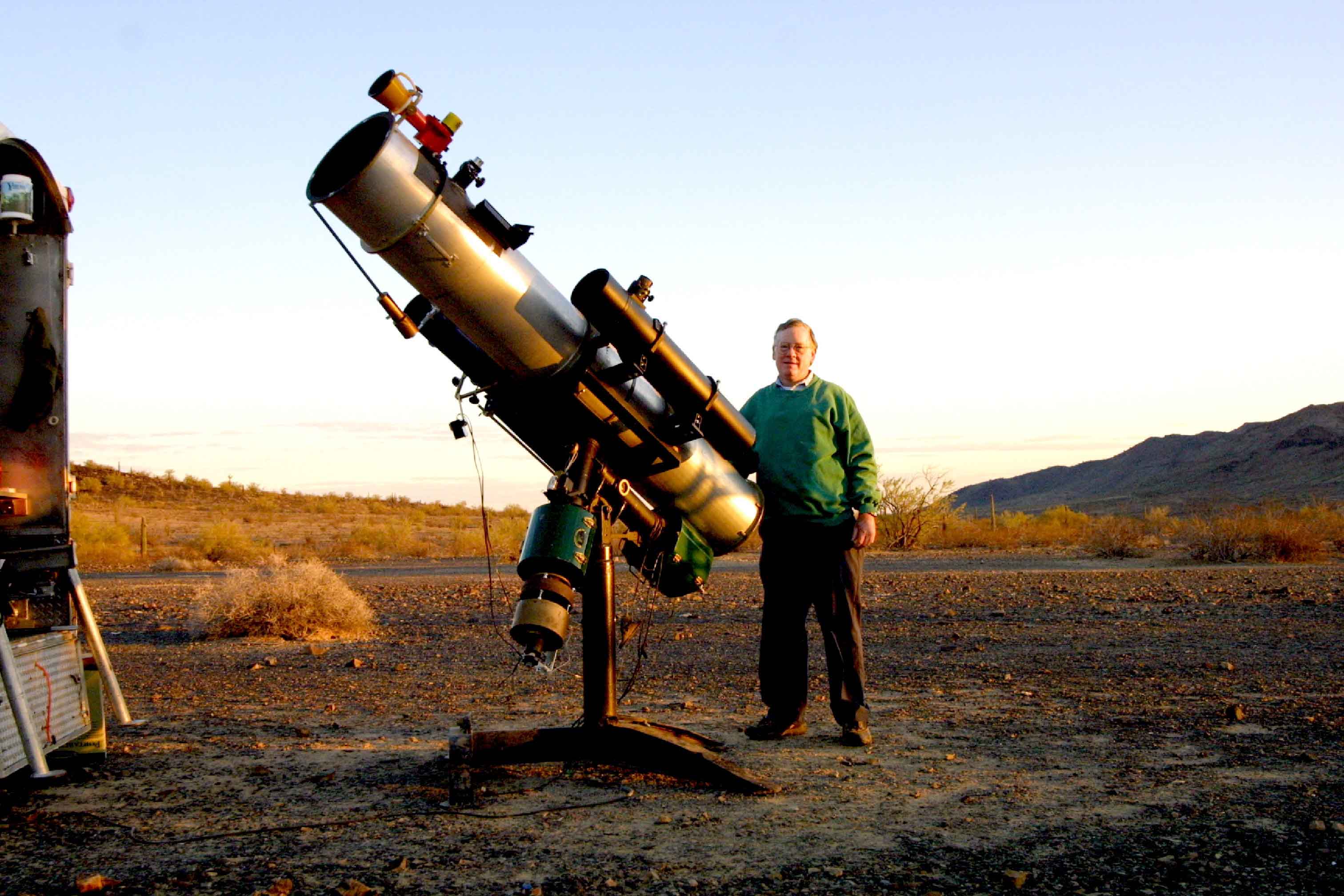


































 BTW, have I met at least a couple of Beautiful Young Pleiadian Women (BYPW) recently?? Is something a brewing??
BTW, have I met at least a couple of Beautiful Young Pleiadian Women (BYPW) recently?? Is something a brewing??  Hmmmmmm. What Would Tone3Jaguar Say?? Siriusly, a small room in a base (with a Cray) and and an Unlimited-Access Badge would be plenty. I can bum rides on UFOs and Mag-Lev Trains -- eat in Military Cafeterias (like Vala Mal Doran) -- and schedule practice-time on pipe-organs!! I'd simply like to be some sort of a Behind the Scenes Observer (who writes reports which are taken seriously). I'm not into chasing, fighting, manipulation, and corruption. I like to watch. Please, please, please study this thread from beginning to end. I intend to -- repeatedly. Namaste and Godspeed.
Hmmmmmm. What Would Tone3Jaguar Say?? Siriusly, a small room in a base (with a Cray) and and an Unlimited-Access Badge would be plenty. I can bum rides on UFOs and Mag-Lev Trains -- eat in Military Cafeterias (like Vala Mal Doran) -- and schedule practice-time on pipe-organs!! I'd simply like to be some sort of a Behind the Scenes Observer (who writes reports which are taken seriously). I'm not into chasing, fighting, manipulation, and corruption. I like to watch. Please, please, please study this thread from beginning to end. I intend to -- repeatedly. Namaste and Godspeed. 











































 I fear that we have a governance and technological nightmare on our hands which might be nearly impossible to resolve. Perhaps 'High-Views' of Ethics and the Law of God are optimal places to search for theological and political truth. It seems as if the Search for Truth involves endless conflict. The Truth is SO overrated. I have never been more pessimistic about the future than I am presently. I'm trying very hard to stop posting -- in part because my thoughts are becoming darker by the minute -- and I do not wish to upset anyone. I continue to fear the extermination of the human-race -- but perhaps we have something to look forward to, once we shed these wretched bodies of ours, and go to a 'better-place'. Here is a REALLY strange question!! Do I have a biological child who I don't know about?? I have NEVER been promiscuous -- but for certain undisclosed reasons -- I wonder if this might be the case. An ethnic female of around ten years of age keeps entering my consciousness!! Have I met this hypothetical child?? What is the meaning of this?? I am sane, aren't I?? Please say 'Yes'!!
I fear that we have a governance and technological nightmare on our hands which might be nearly impossible to resolve. Perhaps 'High-Views' of Ethics and the Law of God are optimal places to search for theological and political truth. It seems as if the Search for Truth involves endless conflict. The Truth is SO overrated. I have never been more pessimistic about the future than I am presently. I'm trying very hard to stop posting -- in part because my thoughts are becoming darker by the minute -- and I do not wish to upset anyone. I continue to fear the extermination of the human-race -- but perhaps we have something to look forward to, once we shed these wretched bodies of ours, and go to a 'better-place'. Here is a REALLY strange question!! Do I have a biological child who I don't know about?? I have NEVER been promiscuous -- but for certain undisclosed reasons -- I wonder if this might be the case. An ethnic female of around ten years of age keeps entering my consciousness!! Have I met this hypothetical child?? What is the meaning of this?? I am sane, aren't I?? Please say 'Yes'!!
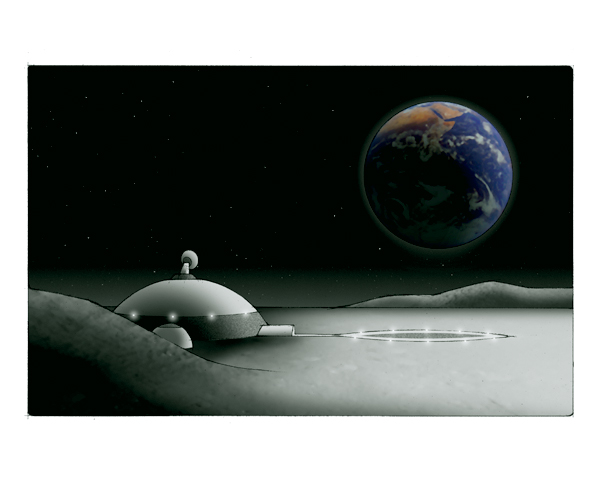

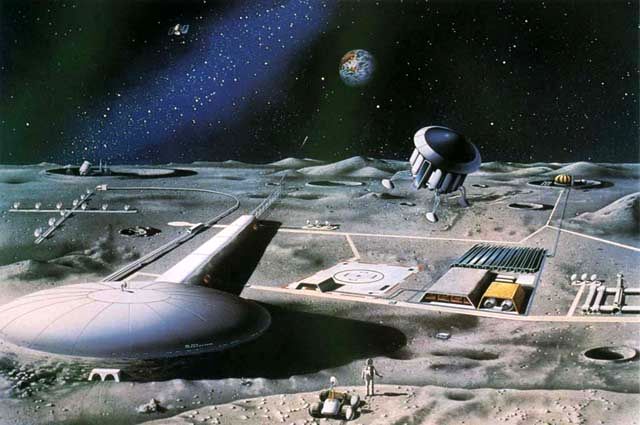












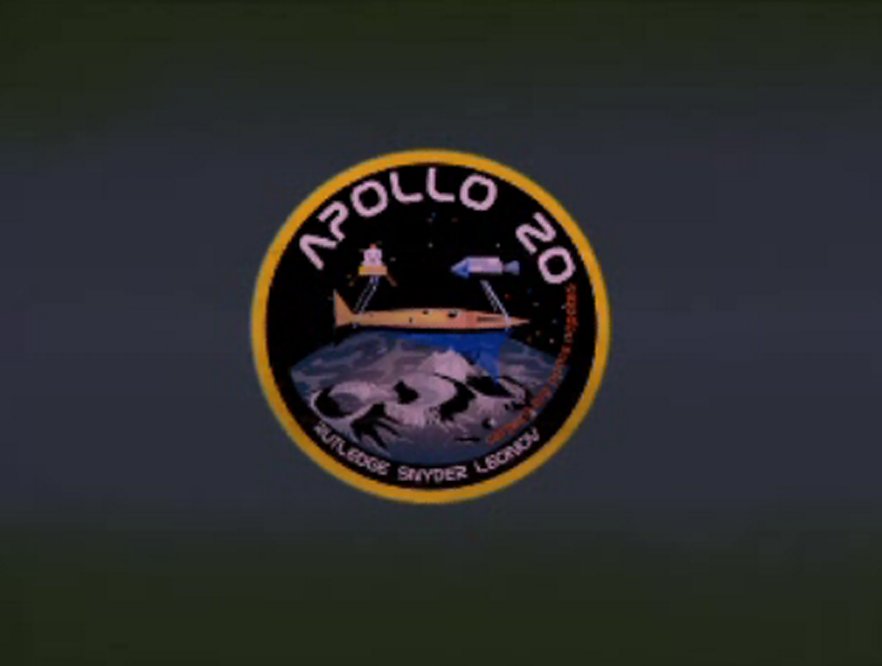






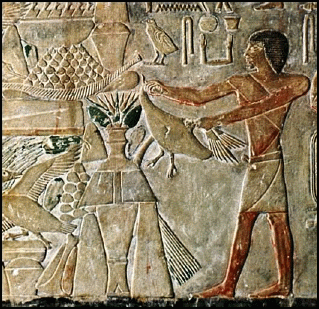




























 try it. Come to my island of avalon and get centered in your mind and body. Then watch your shadow as your hand gets closer to the ground or table or whatever and see how your mind is controling your motion and how the shadow moves with it. Well what if the higher dimension are controled using similar mental controls as part of the 6 directions spirtual tools.
try it. Come to my island of avalon and get centered in your mind and body. Then watch your shadow as your hand gets closer to the ground or table or whatever and see how your mind is controling your motion and how the shadow moves with it. Well what if the higher dimension are controled using similar mental controls as part of the 6 directions spirtual tools. 






















_svg.png)




















.svg/600px-Nearby_Stars_(14ly_Radius).svg.png)



































